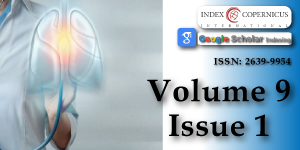Investigation of Bronchoscopy Associated Pseudo-infections
Main Article Content
Abstract
Introduction: Bronchoscopy could lead to local spread of pre-existing infection, spread of infection from one patient to another if the bronchoscope is disinfected inadequately, or, isolation of microorganisms from bronchoscopic specimens in a patient who is clinically not infected, i.e., pseudo-infection. This study is one such investigation of an outbreak of bronchoscopic pseudo-infections in a tertiary care hospital.
Materials and methods: Bronchoalveolar lavage (BAL) samples were inoculated onto MacConkey Agar and 5% Sheep Blood Agar and incubated at 37 °C overnight. The growths obtained on culture media were processed for identification and antimicrobial susceptibility on Vitek 2 Compact as per manufacturer’s instructions. To investigate the outbreak, 5 mL - 10 mL of sterile water was flushed through the channels of disinfected bronchoscope and collected in a sterile container. The samples were centrifuged and inoculated onto MacConkey Agar and 5% Sheep Blood Agar. The growths obtained were further processed similarly as the BAL samples were processed. Environmental swabs collected from the bronchoscopy unit were also processed as the procedure mentioned above.
Results: Bronchoalveolar lavage of 3 patients in a period of 1 week were contaminated with multidrug resistant Klebsiella pneumoniae. Two out of five bronchoscope fluid samples were also contaminated with Klebsiella pneumoniae. Among the swabs collected from bronchoscope unit, Klebsiella pneumoniae was isolated from the detergent box of the endowasher.
Conclusion: The risk of propagation of infection via a bronchoscope can be evaded by proper reprocessing and improving the sterilization practices.
Article Details
Copyright (c) 2025 Malisetti K.

This work is licensed under a Creative Commons Attribution 4.0 International License.
Prakash UBS. Does the bronchoscope propagate infection? Chest. 1993;104(2):552–9. Available from: https://doi.org/10.1378/chest.104.2.552
Rowan NJ, Kremer T, McDonnell G. A review of Spaulding's classification system for effective cleaning, disinfection and sterilization of reusable medical devices: Viewed through a modern-day lens that will inform and enable future sustainability. Sci Total Environ. 2023;878:162976. Available from: https://doi.org/10.1016/j.scitotenv.2023.162976
Mehta AC, Prakash UBS, Garland R, Moses WL, Schaffner W, Silvestri G, et al. American College of Chest Physicians and American Association for Bronchology [corrected] consensus statement: prevention of flexible bronchoscopy-associated infection. Chest. 2005;128(3):1742–55. Available from: https://journal.chestnet.org/article/S0012-3692(15)52213-7/fulltext
Rutala W, Weber D. Guideline for disinfection and sterilization in healthcare facilities, 2008; Miscellaneous inactivating agents. Available from: https://www.cdc.gov/infection-control/media/pdfs/guideline-disinfection-h.pdf
Culver DA, Gordon SM, Mehta AC. Infection control in the bronchoscopy suite. Am J Respir Crit Care Med. 2003;167(8):1050–6. Available from: https://doi.org/10.1164/rccm.200208-797cc
Mehta AC, Minai OA. Infection control in the bronchoscopy suite. A review. Clin Chest Med. 1999;20(1):19–32, ix. Available from: https://doi.org/10.1016/s0272-5231(05)70123-4
Galdys AL, Marsh JW, Delgado E, Pasculle AW, Pacey M, Ayres AM, et al. Bronchoscope-associated clusters of multidrug-resistant Pseudomonas aeruginosa and carbapenem-resistant Klebsiella pneumoniae. Infect Control Hosp Epidemiol. 2019 Jan;40(1):40–6. Available from: https://doi.org/10.1017/ice.2018.263
Klefisch F. A flexible bronchoscope as a source of an outbreak with OXA-48 carbapenemase producing Klebsiella pneumoniae. Hyg Med. 2015;1(40):8–34. Available from: https://www.researchgate.net/publication/282180322_A_flexible_bronchoscope_as_a_source_of_an_outbreak_with_OXA-48_carbapenemase_producing_Klebsiella_pneumoniae
Kakoullis L, Economidou S, Mehrotra P, Panos G, Karampitsakos T, Stratakos G, et al. Bronchoscopy-related outbreaks and pseudo-outbreaks: a systematic review. Infect Control Hosp Epidemiol. 2024;45(4):509–19. Available from: https://doi.org/10.1017/ice.2023.250
Alfa MJ, DeGrange P, Olson N, Puchalski T. Comparison of ion plasma, vaporized hydrogen peroxide, and 100% ethylene oxide sterilizers to the 12/88 ethylene oxide gas sterilizer. Infect Control Hosp Epidemiol. 1996;17(2):92–100. Available from: https://doi.org/10.1086/647252
Centers for Disease Control and Prevention (CDC). Nosocomial infection and pseudo-infection from contaminated endoscopes and bronchoscopes: Wisconsin and Missouri. MMWR Morb Mortal Wkly Rep. 1991;40(39):675–8. Available from: https://pubmed.ncbi.nlm.nih.gov/1910146/
Sorin M, Segal-Maurer S, Mariano N, Urban C, Combest A, Rahal JJ. Nosocomial transmission of imipenem-resistant Pseudomonas aeruginosa following bronchoscopy associated with improper connection to the Steris System 1 processor. Infect Control Hosp Epidemiol. 2001;22(7):409–13. Available from: https://doi.org/10.1086/501925
Zhai Y, Zhao C, Zhang Y. Lurking threat of endowasher contamination – a cause for post-endoscopic infections. WIMJ Open. 2014;1(3):103–6. Available from: https://www.mona.uwi.edu/wimjopen/article/1606
Hübner NO, Assadian O, Poldrack R, Duty O, Schwarzer H, Möller H, et al. Endowashers: an overlooked risk for possible post-endoscopic infections. GMS Krankenhhyg Interdiszip. 2011;6(1):Doc13. Available from: https://doi.org/10.3205/dgkh000170
Beilenhoff U, Neumann CS, Rey JF, Biering H, Blum R, Schmidt V; ESGE Guidelines Committee. ESGE-ESGENA guideline for quality assurance in reprocessing: microbiological surveillance testing in endoscopy. Endoscopy. 2007 :39(2):175–81. Available from: https://doi.org/10.1055/s-2006-945181
Logan N, Yurosko C, Mehta A, Chhabria M, Kennedy MP, et al. Bronchoscopy-related infection and the development of single-use bronchoscopy technology. Curr Pulmonol Rep. 2023;12:190–7. Available from: https://doi.org/10.1007/s13665-023-00328-7

